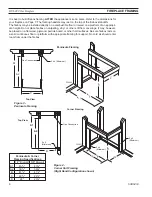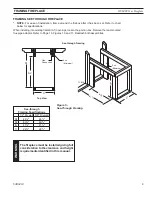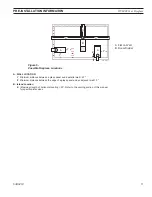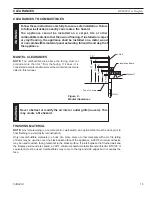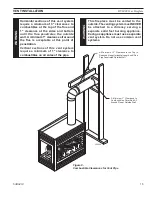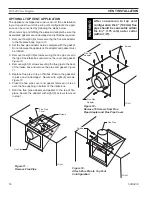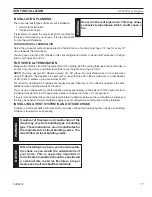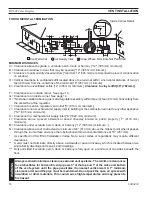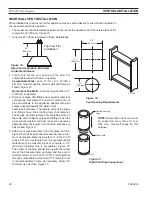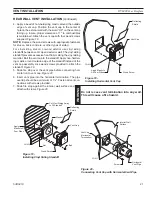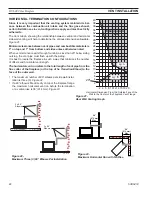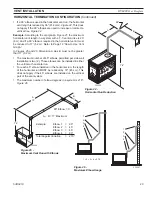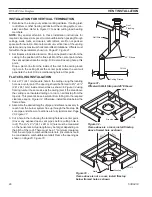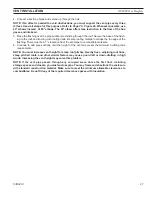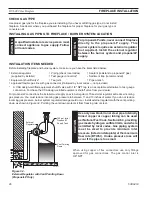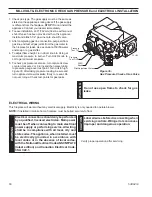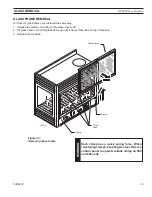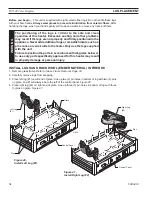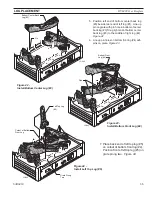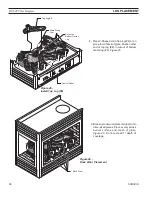
53D0419
DV6000 Gas Fireplace
vent InstallatIon
horIZontal terMInatIon conFIGuratIons
since it is very important that the venting system maintain its bal-
ance between the combustion air intake and the flue gas exhaust,
certain limitations as to vent configurations apply and must be strictly
adhered to.
The Vent Graph, showing the relationship between vertical and horizontal
side wall venting, will help to determine the various dimensions allowable.
Figure 21
Minimum clearance between vent pipes and combustible materials is
3" on top and 1" from bottom and sides unless otherwise noted.
When vent termination exits through foundations less than 0" below siding
outcrop, the vent pipe must flush up with the siding.
It is best to locate the fireplace in such a way that minimizes the number
of offsets and horizontal vent length.
The horizontal vent run refers to the total length of vent pipe from the
flue collar of the fireplace (or the top of he Transition Elbow) to the
face of the outer wall.
•
The maximum number of 90° elbows per side wall instal-
lation is three (3).
Figure 22
•
If a 90° elbow is fitted directly on top of the fireplace flange
the maximum horizontal vent run before the termination
or a vertical rise is 36” (914 mm).
Figure 23
Figure 21 -
Rear Wall Venting Graph
Horizontal Dimension From the Outside Face of the
Wall to the Center of the Fireplace Vent Flange
40
38
36
34
32
30
28
26
24
22
20
18
16
14
12
10
8
6
4
2
2 4 6 8 10 12 14 16 18 20
eg: A
Dimensions in
Feet
20"
FP2248
sidewall vent graph
FP1176
max 90 bends
Figure 22 -
Maximum Three (3) 90° Elbows Per Installation
3 x 90°
Elbows
3 x 90°
Elbows
FP1176
Max 20"
Max 20"
36"
(914 mm)
Max.
36"
(914 mm)
Max.
FP1177
max horizontal run
Figure 23 -
Maximum Horizontal Run with No Rise
FP1177
Summary of Contents for DV6000
Page 52: ...52 53D0419 DV6000 Gas Fireplace...
Page 53: ...53D0419 DV6000 Gas Fireplace 53...

